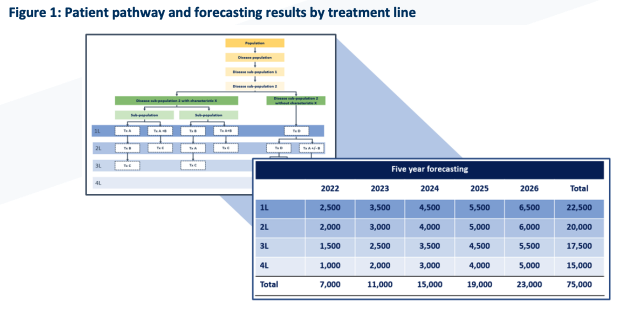A forecasting patient pathway model in advanced non-small cell lung cancer (NSCLC)
A review of evidence informing the development of a patient pathway model to inform forecasting and identify evidence gaps
The challenge
Our client was entering the highly dynamic clinical treatment landscape for lung cancer, with a focus on precision medicine targeting specific genetic mutations. This reinforced the need to better understand the patient pathway and the proportion of patients in each clinical segment to support research and patient care decision making across the EU5, China and Japan.
The solution
Our solution followed a three-step process: > Mapping country specific epidemiology and patient pathways > Review of evidence and gap analysis > Development of a forecasting interactive patient pathway model. Given the complexity of the disease area and treatment options available, our team worked with country affiliates to ensure the patient pathway was reflective of real life.
Key results
The evidence review and gap analysis enabled development of the model, whilst also highlighted any gaps to inform further evidence generation. The model visually demonstrated the number of patients in each sub-population highlighting eligibility for specific targeted treatments at each stage of the patient pathway. Furthermore, the model generated a 5-year forecast of eligible patients for each country and each line of treatment.
Value to the client
The gap analysis clearly highlighted data gaps and included recommendations to inform planning decisions in terms of real-world evidence collection. Furthermore, the dynamic patient pathway model supported decision making through estimating eligible patient populations for five years for a new product in each treatment group across the EU5, China and Japan.

